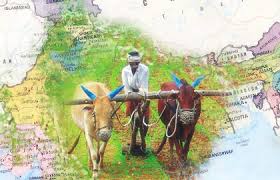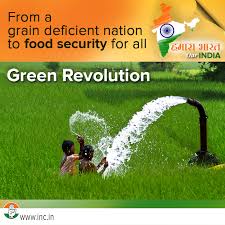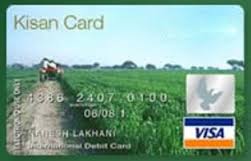Source: An essay on cyber crime
Category: Uncategorized
An essay on cyber crime
Source: An essay on cyber crime
An essay on cyber crime
An essay on Cashless India Sheme
Agriculture in India
Agriculture is known as back bone of Indian economy. It is playing the most important role in Indian economy for very long time. Today India has second rank in farming. It accounts for 13.7% GDP and about 60% of total workforce. This is the main source of livelihood for a great part of India. Industrialization also depends on it because raw material for many products are grown in fields.
From 1970 to 2011 GDP share of agriculture has fallen from 43 to 16%. It was not because of reducing production in agriculture but because of rapid growth in industrialization, services and no-agriculture means. But the basis of all these is the agriculture.
History of Agriculture
In Rigveda description of agriculture in Indus Valley is found. In the six millennium BC rice was the domestic crop on the bank of river Ganges. Other crops cultivated in India were mustards, castor, mung bean, black gram black, horse gram, cotton, grapes, dates etc. In middle ages agriculture became proper and business also started through it. But in this age situation of the farmer became bad because of ‘Jamindari’. After Independence, due to Five Year Plans, agriculture made progress and contribution In GDP increased.
Green Revolution
Green Revolution started in 1960s in India for the proper and directional development of agriculture. Initiatives of green revolution were-
- To get self-reliance in food productivity so that we needn’t to import food from other countries.
- Origin of new scientific techniques for making more productivity.
- Making new employment opportunities with agriculture.
In 1948 there was production of 0.8 tonne grains in 1 hectare which increased to 4.7 by 1975, hence India became self-sufficient by 1970s. In 2000 farmers were capable to yield 6 tonnes wheat per hectare if natural situation was in favor.
In 1980, Indian agriculture shifted towards “evolution of production pattern in line with demand pattern” and commodities like oilseed, fruit and vegetable entered in Indian agriculture.
To increase production of rice new techniques were brought in the fields like improved seeds, improved instruments, good transportation, electricity and cold storages to prevent food spoiling.
Schemes In Field of Agriculture
- ‘Rastriya Krishi Vikas Yojna’ (RKVY) was started in 2007-08 with 7895.12crore rupee fund for spreadind green revolution in eastern India, providing Agriculture instruments at rent to some areas and growing saffron productivity in Jammu and Kashmir.
- Kisan Credt Card yojna (KCC) had started in 1998 for giving proper loan to the farmers in need.
- National Food security Mission (NFSM) was started during 11th Five year plan by aiming to increase in productivity and making new opportunities of employment.
- National Horticulture mission (NHM) was started in 2005-06 for the proper improvement in horticulture in Andaman Nikobar, himanchal Pradesh, Paducheri, Uttarakhand, Sikkim etc.
Overview
India is the World’s largest producer of fresh fruits, milk, many spices, jute and castor oil seed. It has second rank in producing wheat, rice and third in several dry fruits, textile raw materials, fish, egg, coconut, sugarcane etc. According to a report in 2008, it was claimed that India can feed its growing population completely and can export also if it reduce its food spoilage and improve its infrastructure.
In June 2011 there was record the production of 85.9 million tonnes wheat. The per capita supply of rice in India is greater than that consumption of rice in Japan in a year.
Agriculture plays a significant role in overall social and economic fabric of India.
RURAL INDIA HEALTH CARE

India is the land of combination of both villages and cities. 70% of total population is living in rural areas. Health of rural areas is one of the big responsibilities of the government. Future of any country depends upon its healthy environment and pollution free society. India has largest number of maternity deaths. Lack of facilities for deliveries, less awareness about family planning and bad health-care centers for poor are major issues. According to a survey 8% of Primary health care centers do not have doctors, 39% do not have lab technicians and 18% do not have pharmacists.
The development of health society in rural areas does not totally depend upon government facilities but also social help, a good communication system, technology and the big solution is education of sanitation and healthy environment.
Problems
Although there are many schemes under process by the government of India for healthy rural societies but there is no desired result due to gap between requirement and availability. These are following problems-

- The problem of population makes all the schemes un-effective. Hospitals and health care centres are available but there is so crowd that facilities do not reach to all.
- In many areas hospitals are very far so people are not able to get there.
- Private sector health care is very expansive so many of the people cannot afford.
- Another problem is the lack of facilities and technology in government hospitals in rural areas.
- Lack of communication in rural areas due to which proper schemes and programmes cannot be reached to all.
Along with this, people who don’t know their rights about health, lack of awareness about health, lack of sanitation in rural areas are also the reasons of unhealthy environment.
Programmes to benefit Health care
The National Rural Health Mission (NRHM) programme was launched on April 2005 undertaken by government of India by the Prime Minister Dr. Manmohan Singh. Programmes running under this are following-
- Accredited social health activist ( ASHA) is engaged to create a link between people and health system. Specially women and children who find difficult to get care centres ASHA provide them service.
- Janani suraksha Yojna works to make available all the government facilities to the pregnant women. Under this programme cash is also provided to the women for giving birth in government facilities hence this programme is very effective in rural areas.
- National Mobile Medical Units covers the unserved areas.
- National Ambulance Service make available service to every corner of India while calling on a toll free number within half hour.
- Rastriya Bal Swasthya Karykram works for children between 0-18 years and provide them free treatment also surgery.
- Free Drugs and Free Diagnostic service provides free treatment for rural areas and decreases their expenditure.
- There are District hospitals and multi-speciality health care centres available in every district and blocks also.








